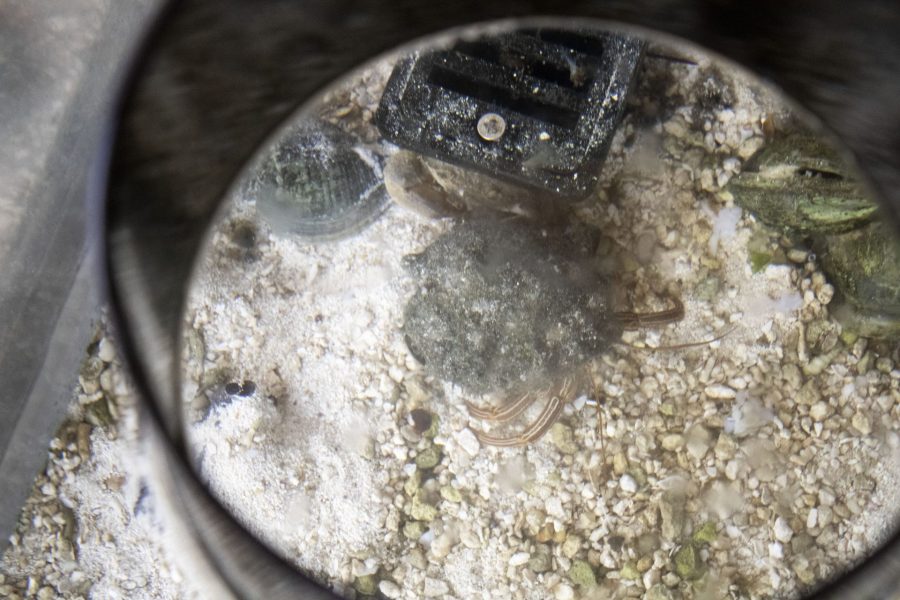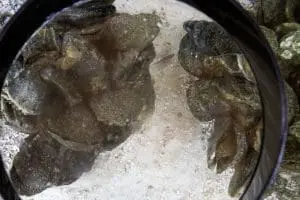

Viewfinders will help you find the residents of our oyster reef tank!
You may have noticed a new “look” to our previous Touch Tank in our Paws On area. The habitat has been transformed into an oyster reef tank ideal for your own scavenger hunt as you carefully search for its inhabitants!

Check out our oyster reef tank in our Paws On area!
The transformation comes after our animal care team saw some positive behaviors from the habitat’s residents during our closure at the start of the Covid-19 pandemic. The crabs, fish, mollusks and other aquatic animals explored areas of their tank that our keepers had never seen them in before!
“The curiosity of many of these invertebrates was incredible!” said Mack Ralbovsky, the area supervisor of our Herps and Aquatics team.
The crown conchs and hermit crabs are the best examples of this newfound inquisitiveness.

Look carefully throughout our oyster reef tank to see all of its residents!
Previously, when many hands were entering the space, the conchs completely buried themselves away from view throughout guest viewing hours. Since the shift to a viewing tank, the conchs explore throughout the day and can be seen through the aquarium. There are also more conch eggs throughout different spaces in the habitat.
As for the hermit crabs, they are much more active. They constantly explore around the oyster reefs – a rare sight when the tank was a touch tank.
Water quality is always something overseen closely in touch tank habitats. Since our tank’s shift, there’s less of a possibility of something harmful being introduced.
“When there are a large amount of hands entering the aquarium daily, even with the best precautions, we never know what exactly is being introduced that could be harmful to the animals,” Mack said.
There are several different aquatic species that call this tank home in addition to the crown conchs and hermit crabs mentioned above: big claw snapping shrimp, sheepshead minnows, gray sea cucumbers and tiger gobies.
By visiting this tank as well as our larger “lagoon” tank in Paws On, you can get a full picture of a healthy ecosystem. Many of the species in our oyster reef tank are filter feeders that keep the water and reef clean while also providing food for the species found in the larger tank, particularly black drums.

Look carefully throughout our oyster reef tank to see all of its residents!
Currently, the top of the reef tank is removed on the weekends so guests can use special looking glasses to see into the tank.
Mack’s main piece of advice to see all our oyster reef tank residents? Patience!
“The keeper team sees different individuals every time we walk around and inspect the tank,” Mack said. “As long as everyone is patient, they will be able to see a plethora of different species scatter throughout the oyster reefs.
“An eye for detail can also help distinguish some of the inhabitants that are camouflaged around the tank!”
Brevard Zoo is an independent, not-for-profit organization that receives no recurring government funding for our operating costs. Your generous support enables us to continue to serve our community and continue our vital animal wellness, education and conservation programs.
